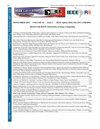Bidirectional Step-Up Multi-Input Converter with Improved Voltage Gain for DC Microgrids
IF 1.3
4区 工程技术
Q3 COMPUTER SCIENCE, INFORMATION SYSTEMS
引用次数: 0
Abstract
High-gain converters are well-established circuit designs that find practical use in industrial and commercial settings, particularly in applications demanding high power ratings, such as Fuel Cell Electric Vehicles (FCEV) and grid-connected Renewable Energy Sources (RES). High-gain topologies from a single source pose reliability issue in RES applications due to increased device count and stress. In the event of source failure, these topologies may lead to an energy supply gap for the loads. Addressing this challenge, integrating diverse energy sources with step-up voltage capability stands as a promising solution for both DC microgrid and Electric Vehicle (EV) applications. In this study, a Dual-Input Single-Output (DISO) converter is introduced to integrate various sources and achieve an increased output voltage gain by charging the inductors in parallel and discharging them in series. Moreover, if any sources fail, the converter can supply the energy to the load from the available source and it can be operated in bidirectional mode. This paper also extensively discusses theoretical analysis, considerations related to design and circuit modeling. Furthermore, include a comparison of this converter with several other topologies. It examined to validated with a 250 W laboratory prototype.改进直流微电网电压增益的双向升压多输入变换器
高增益转换器是一种成熟的电路设计,在工业和商业环境中具有实际用途,特别是在要求高额定功率的应用中,例如燃料电池电动汽车(FCEV)和并网可再生能源(RES)。由于器件数量和压力的增加,来自单一源的高增益拓扑在RES应用中会带来可靠性问题。在电源故障的情况下,这些拓扑结构可能导致负载的能量供应缺口。为了应对这一挑战,将多种能源与升压能力相结合,对于直流微电网和电动汽车(EV)应用来说都是一个很有前途的解决方案。本研究提出了一种双输入单输出(DISO)变换器,通过对电感并联充电和串联放电来集成各种电源,从而提高输出电压增益。此外,如果任何一个电源发生故障,变流器可以从可用的电源向负载提供能量,并且可以在双向模式下工作。本文还广泛讨论了理论分析、设计注意事项和电路建模。此外,还将此转换器与其他几种拓扑结构进行比较。它在250w的实验室样机上进行了测试和验证。
本文章由计算机程序翻译,如有差异,请以英文原文为准。
求助全文
约1分钟内获得全文
求助全文
来源期刊

IEEE Latin America Transactions
COMPUTER SCIENCE, INFORMATION SYSTEMS-ENGINEERING, ELECTRICAL & ELECTRONIC
CiteScore
3.50
自引率
7.70%
发文量
192
审稿时长
3-8 weeks
期刊介绍:
IEEE Latin America Transactions (IEEE LATAM) is an interdisciplinary journal focused on the dissemination of original and quality research papers / review articles in Spanish and Portuguese of emerging topics in three main areas: Computing, Electric Energy and Electronics. Some of the sub-areas of the journal are, but not limited to: Automatic control, communications, instrumentation, artificial intelligence, power and industrial electronics, fault diagnosis and detection, transportation electrification, internet of things, electrical machines, circuits and systems, biomedicine and biomedical / haptic applications, secure communications, robotics, sensors and actuators, computer networks, smart grids, among others.
 求助内容:
求助内容: 应助结果提醒方式:
应助结果提醒方式:


